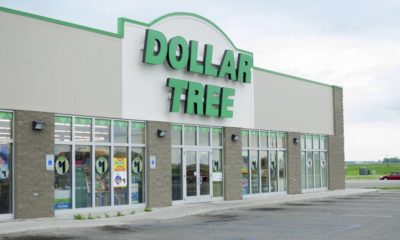Stocks
How to Grow a Dollar Tree

In this column, Malcolm Berko teaches us how to grow a dollar tree.
TAKING STOCK
BY MALCOLM BERKO
RELEASE: WEDNESDAY, DECEMBER 20, 2017
Dollar Tree Growing
How to Grow a Dollar Tree
Dear Mr. Berko:
I recently discovered Dollar Tree, and its prices are awesome. I buy everything there that I can, and I figure we save $65 to $70 a week for my family of six. I'm thinking of buying 150 shares for our joint account and 50 shares for my individual retirement account. What do you think? — FD, Moline, Ill.
Dear FD:
Dollar Tree (DLTR-$109) has Libby's, Swanson, Armour, Del Monte, Nabisco, Hormel, Betty Crocker, Nestle, Progresso, Lance, Hunt's, Welch's, Jimmy Dean, Knorr, Campbell's, Uncle Ben's, Kraft, Hefty, Glad, Kleenex, Reynolds, Bounty, Colgate and Crest — plus brand-name soaps, deodorants and shampoos — all for a buck a package. DLTR also sells Tide, Clorox, Downy, Arm & Hammer, Pine Glo and Comet at a buck each. Rather than spend $5 on a birthday card, a Mother's Day card, a get-well card or a Valentine's Day card, you can find it for a buck each (sometimes two for a buck) at DLTR. And for a buck apiece, you can buy all sorts of office and school supplies — packages of markers, binders, folders, glue sticks, highlighters, ballpoints, notebooks, tape, weekly planners. Then there are brand-name durable hardware products, housewares, automotive supplies, apparel, accessories, batteries, towels and bedsheets for a dollar bill. Most Dollar Tree stores also have a frozen-food section with meats, vegetables and frozen dinners, all at a buck. At those prices, Washington should demand that everyone who uses food stamps make their purchases at a DLTR store. I guestimate the government could save billions a year in food stamp costs.
[amazon box=”014026468X”]
DLTR has 15,200 locations and 170,000 employees. In 2017, there has been an average of $1.4 million in sales per store. That comes to $22 billion in total revenues, up 10 percent from 2016. And management has finally worked out the integration kinks from its 2015 merger with Family Dollar Stores. The Family Dollar merger should produce over $300 million in cost synergy. Net profit margins have improved nicely in 2017. Long-term debt is falling. Return on capital continues to improve, as do operating margins. DLTR shares have increased by 44 points in 2017, from a low of $65 to $109, despite concerns about hard discounters — including Aldi, Lidl and Amazon's purchase of Whole Foods. Not even Walmart can sell a large tube of Crest or Colgate or deodorant such as Brut or Arrid for a buck each. Wall Street has liked the merger between Dollar Tree and Family Dollar. DLTR is one of the few retail names expanding its unit locations at a rapid pace. Management expects to add 1,500 new stores next year, and many on the Street think DLTR could have 20,000 locations by 2022, which might produce revenues of $30 billion, with expected gross margins of 35.5 percent, operating margins of 12.5 percent and earnings of $7.05 a share. And it seems that DLTR's low prices make this company more nearly immune to inflation, recession and negative economic trends.
It appears that management has been able to blend value with convenience — important to millions of lower-income consumers. Resultantly, a growing number of lower-income consumers now consider DLTR as an occasional substitute for mass merchants. And management, looking 10 years into the future, believes that the present corporate structure could easily support 25,000 locations. That shouldn't be difficult. Its location costs are in areas where real estate is not expensive and rent (averaging $11 a square foot) is below average. The typical retailer pays between $15 and $22 a square foot. Each Dollar Tree store has minimal employee needs — a general manager, one or two people at the register and another to stock the shelves. Imagine Walmart and Costco and other larger merchants that have 55 or more employees per store. As a result, DLTR's average operating cost per square foot (not including depreciation) is between $36 and $40 and significantly lower than that of Target or Walmart.
DLTR observers believe that in the coming three to four years, the stock could trade at the $150-$170 level, which would be 20 to 21 times anticipated share earnings. I think it's an outstanding long-term buy.
Please address your financial questions to Malcolm Berko, P.O. Box 8303, Largo, FL 33775, or email him at [email protected]. To find out more about Malcolm Berko and read features by other Creators Syndicate writers and cartoonists, visit the Creators Syndicate website at www.creators.com.
COPYRIGHT 2017 CREATORS.COM






1 Comment
How can I get Malcolm Burko’s advice on a regular basis? I moved in July and no longer get the newspaper in which I read his column.